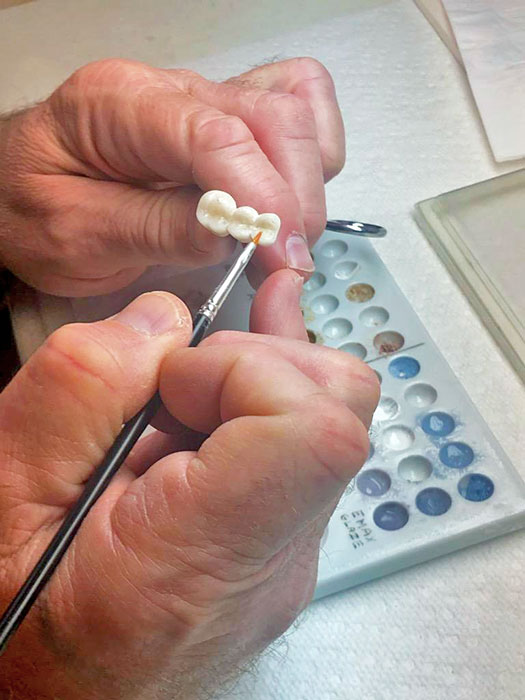Have you walked down the cereal aisle at the local supermarket and couldn’t make up your mind about which box to pick?
Have you tried to choose new wallpaper or paint for your den? It’s common to become overwhelmed by too many choices. This is true in dentistry as well.
In a simpler time, choosing the appropriate dental material for posterior crowns was easy–yellow gold, white gold, metal alloy, or stainless steel. The choices were limited with cost to the patient being the major factor in the decision.
Today, just the opposite is true. There are so many choices that dentists must use a sort of algorithm to decide which material is most suitable for each patient’s unique situation.
In fact, there are now over ten commonly used materials for posterior crowns.
Posterior Crown Categories
The first category to consider is zirconia.
Under the zirconia umbrella, you’ll find solid, with its plethora of brand names; translucent , which is becoming more popular for anterior teeth; second and third generation; plus the Y’s with distinct number designations.
Nothing compares to zirconia for strength and durability–even for patients with heavy occlusion, or those who brux.
Related: Zirconia – Taking Dental Restorations to the Next Level
After the zirconia comes the rest of the pack, which includes: Lithium disilicate, veneered zirconia, PFMs, lithium silicate, cast gold alloys, and resin nano ceramic polymers.
Wait until tomorrow; that list will be outdated.
Considerations
When selecting a material for posterior crowns, consider these factors: Tooth location, esthetics, patient wishes, occlusion, lab costs, and patient finances.
A 2016 National Center for Biotechnology Information survey revealed that solid zirconia, PFM, and lithium disilicate were the three most common choices of dentists for posterior crowns.
Solid zirconia has had remarkable success for posterior crowns, particularly for patients with heavy occlusion and bruxers who prefer a natural tooth color crown as opposed to metal.
Recent: How to Choose the Right Mouthguards & Night Guards
And, since there is no porcelain to chip or fracture, the repair and failure rate is less than the traditional PFM.
PFMs certainly have history on their side, having been used for posterior crowns since the late 1950s. While esthetically superior to full metal, over many years of mastication the glaze will wear, and their beauty may be compromised.
And, as noted above, porcelain chipping and fracturing poses a concern.
While lithium disilicate currently provides superior esthetics, it does not rival zirconia for strength.
According to Dr. Gordon Christenson, “It [lithium disilicate] is a safe restoration for posterior crowns that are not expected to experience heavy occlusion, but caution is advised for patients with overt bruxism or abusive parafunctional conditions.”
For those patients, zirconia is a better choice.
Dentists and patients rarely select cast gold alloys for crowns due to excessive cost and poor aesthetics. The new resin nano ceramics have issues with debonding and other glitches that must be worked out before dentists will embrace it as a viable option.
Bringing It All Together
When the treatment plan calls for a posterior crown, weigh each of these considerations:
- Occlusion
- Bruxing history
- Location in the mouth
- Lab costs
- Insurance and patient copay
- Wishes of the patient
Each factor must carry the appropriate weight in your decision-making process.
Not sure which solution works best for you? We’ll help you decide which materials are best suited for your posterior crown cases.
Our experienced dental technicians specialize in dental restoration fabrication, and we’ve seen nearly every type of case. We’ll guide you through your options, and make sure to get you exactly what you need to give your patient a reason to smile!
Complete the form below to contact us today, or call us at 866-791-7025!
Bibliography
https://jada.ada.org/article/S0002-8177(18)30088-6/fulltext



